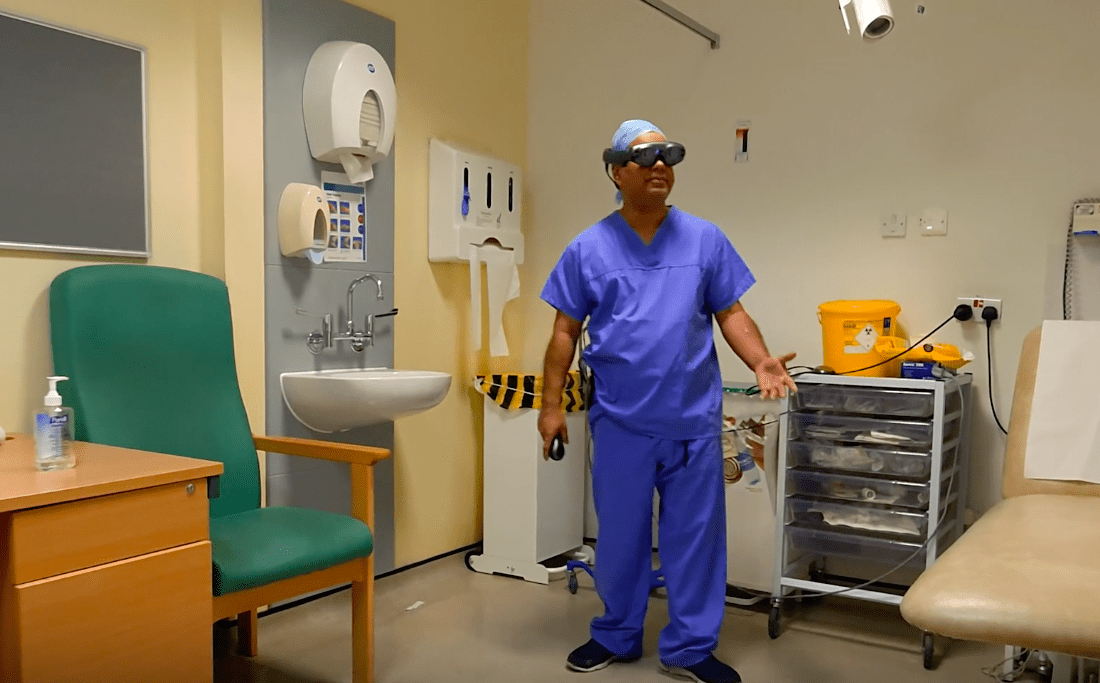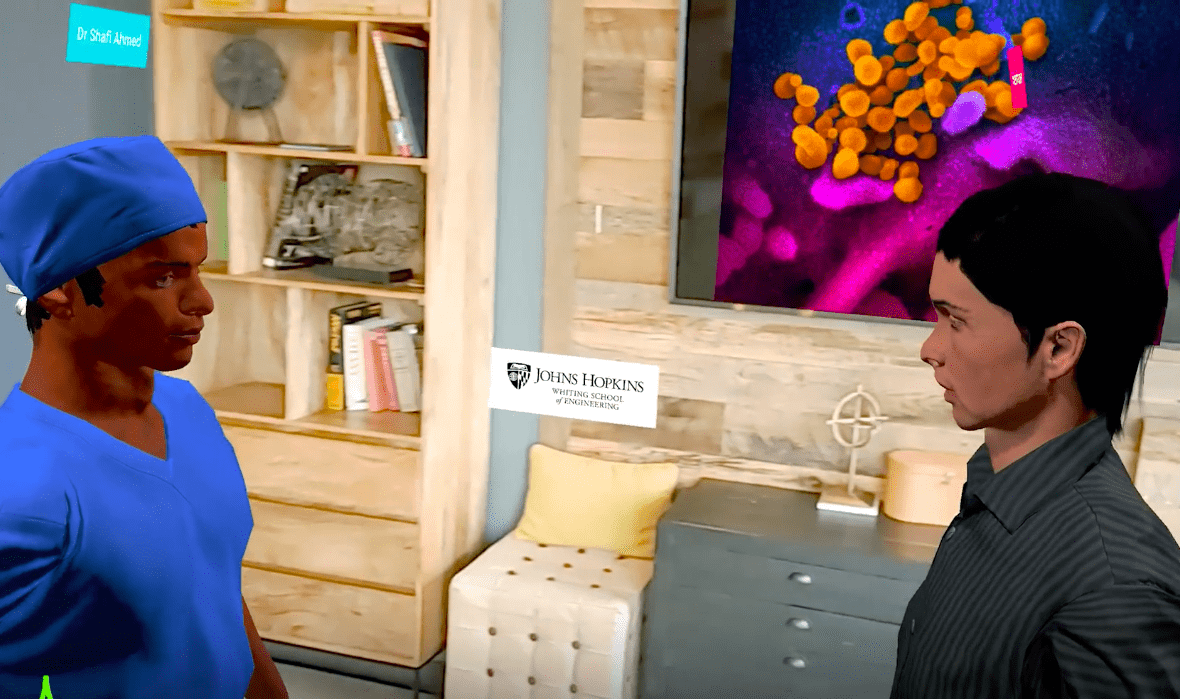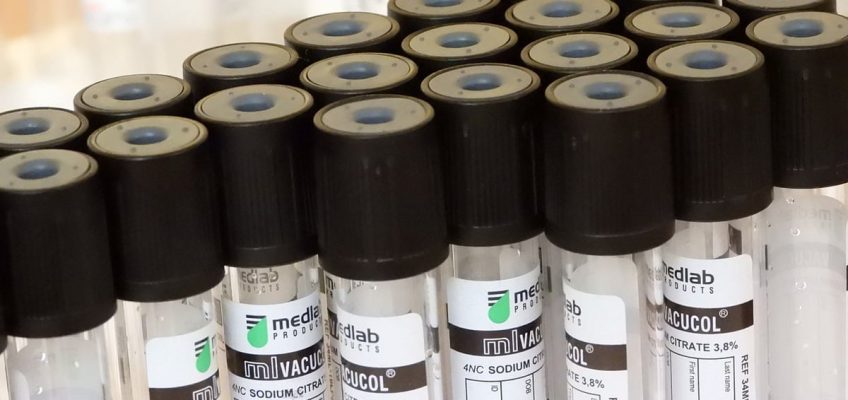The Coronavirus pandemic has become a catalyst for us to embrace immersive technologies in our “new normal” workflow.
“This pandemic may prove to be the inflection point for humanity to reimagine the way we interact with each other,” Professor Shafi Ahmed tells me.
These days, I suppose, we all look for silver linings wherever we can get them, and the widespread adoption of XR – a technology that could ultimately boost productivity, reduce our carbon footprint, democratize education and help us all stay connected – could prove to be just that.
Using XR in the medical field
Dr. Ahmed is a UK-based surgeon who has been a longstanding advocate for emerging technologies and is particularly enthusiastic about the possibilities that XR enables.
I came across his work recently when a video on Twitter caught my attention. The short demo showed him explaining various aspects of the COVID-19 virus to his colleagues – who were physically thousands of miles away – in a virtual environment. In spite of the lag at certain points, which rendered the avatars’ body language awkward (and rather funny), the interaction still came across as more natural and dynamic than, say, a video call.
Dr. Shafi Ahmed is a UK-based surgeon who has been a longstanding advocate for emerging technologies Click To TweetIn the demo, Dr. Ahmed manipulated a holographic model of the COVID-19 virus and viewed 3D graphics generated from data provided by Johns Hopkins CSSE. These visualizations showed recovery rates, mortality in different countries, and illustrated the trends of the disease spread over time, conveying a much better and clearer understanding of the effects of mitigation and intervention in flattening the curve.
What is also interesting about this example is that participants were using different “keys” to access the Beame platform from London, New York, and Atlanta respectively. Dr. Ahmed is seen wearing a Magic Leap One headset, while his colleagues used mobile phones, yet they all “inhabited” the same virtual space and were able to effectively visualize and interact with both the people and objects within it. This device-agnostic accessibility will be crucial in making XR pervasive and accessible going forward.
These immersive visualizations showed recovery rates, mortality in different countries, and illustrated the trends of the disease spread over time Click To Tweet
This wasn’t Dr. Ahmed’s first foray into XR collaboration, however. In 2018, Medical Realities, the company where he serves as Chief Medical Officer, collaborated with Ian Nott and Harrison Lee, the co-founders of Aetho (the makers of the Beame platform) on a project showcasing the collaborative functionalities of the Microsoft HoloLens.
From the operating theatre at The Royal London Hospital, they arranged a three-way immersive interaction where surgeons from London, New Jersey and Mumbai (wearing a HoloLens 1 device) interacted through blue polygonal avatars. The video was meant to showcase what a futuristic way of performing teaching, training and immersive consultation would look like, and it is fair to say that we have steadily inched closer to that reality since then.
With developments in facial tracking and hand motion technology, Dr. Ahmed and the Aetho team were keen to do something similar with the Magic Leap One headset, and as the coronavirus issue took center-stage that particular use case became a clear choice.
As connectivity improves immersive applications will be further supercharged Click To TweetAs connectivity improves, these applications will be further supercharged, of course, yet platforms such as Beame are not dependent on a 5G rollout to work. Aetho’s Ian Nott explained to me that they designed the platform with accessibility in mind, as it supports iPhones and Android devices so that users can get a sense of AR telepresence without necessarily wearing devices costing several thousands of dollars such as HoloLens or Magic Leap. In fact, Nott tells me that Beame actually requires less bandwidth than a typical video call, and the Magic Leap COVID-19 demo was shot on a smartphone with a poor 4G connection.
Collaboration tools in the spotlight
XR is already leveraged as a collaboration tool across many sectors, yet in healthcare scenarios, the gains seem most evident, especially in the context of the current health emergency the global community is working through.
The promise of XR lies in seamlessly bringing together the physical and digital worlds, ideally giving us the best of both. This blended reality is what we see demonstrated in use cases such as these.
XR is already leveraged as a collaboration tool across many sectors Click To TweetBeing immersed in a virtual environment as opposed to seeing video on a screen gives us a heightened sense of presence, which, in turn, enables more meaningful psychological connections with fewer distractions. XR allows you to take advantage of the safety offered by technology-mediated interactions without giving up the sense of really connecting with your counterpart(s).
The possibilities presented by XR in education are also well documented – especially where it comes to training healthcare professionals – and this is another piece of the puzzle where it comes to coping with coronaries-related issues.
The right place at the right time
The current situation presents a perfect storm generated by – on the one hand – the desperate need to teach and update the skills of a vast number of physicians, nurses and technicians in order to enable them to tackle the enormous challenges ahead while on the other we have the practical limitations on travel and face-to-face interaction which make traditional training setups both impractical and dangerous.
The pandemic could bring a tipping point for XR technology Click To TweetThis is why Danny P. Goel, CEO of Precision OS, believes the pandemic could bring a tipping point for XR technology, due to this cocktail of enforced social distancing, working (and studying) from home and curtailing of travel.
“XR has a direct impact to reduce the feelings of isolation by returning the connection to others in 3D,” he says, adding that over the next few months, he expects the economics of the sector to shift significantly. Given the power and efficiency of experiential learning in XR, a massive workforce could theoretically be mobilized very quickly, which is exactly the sort of thing we need to enable during such critical times.

“Although XR is in its infancy, a situation like this does pose many questions about its utility. From virtual conferences to training, XR will continue to become a significant part of our lives. Where the pandemic has pushed us from living in a world of independence to one of inconvenience and isolation, XR can help us reclaim some semblance of autonomy and interaction without dependency on physical mobility,” Goel concludes.
This article was originally published on Futurithmic
“This pandemic may prove to be the inflection point for humanity to reimagine the way we interact with each other.”
Learn more about how the adoption of #immersive technology has changed: https://t.co/3ydaUoOKjp pic.twitter.com/J4r1uqrxlk— Futurithmic (@futurithmic) July 3, 2020









